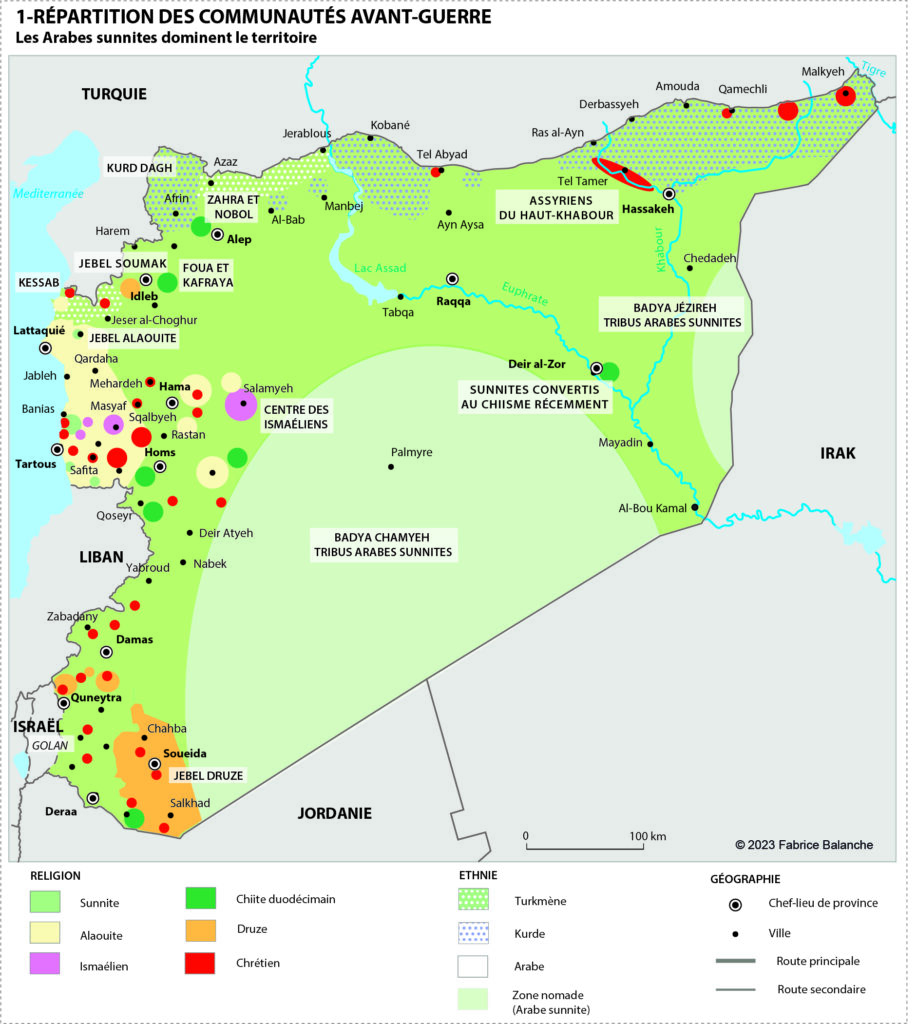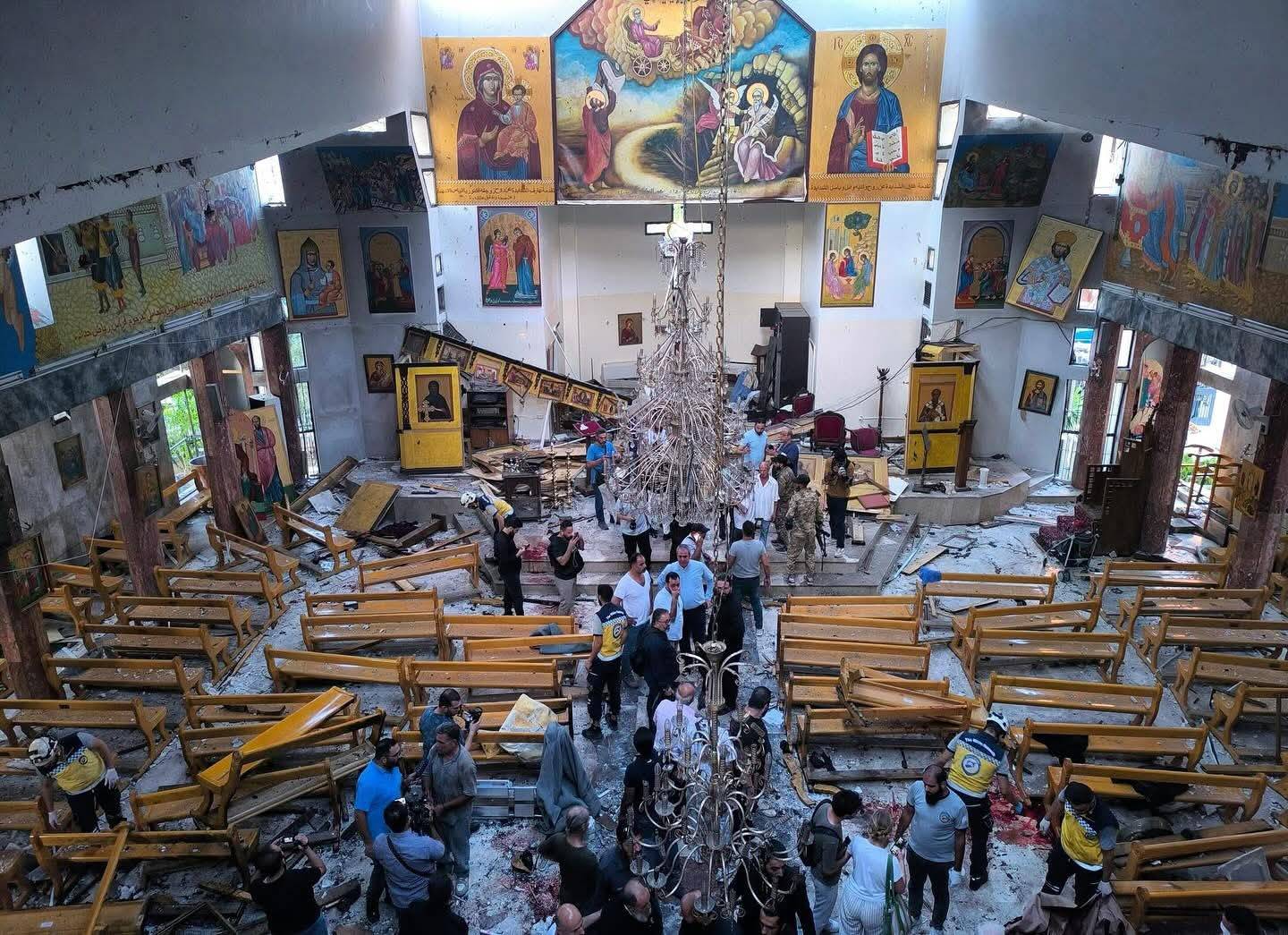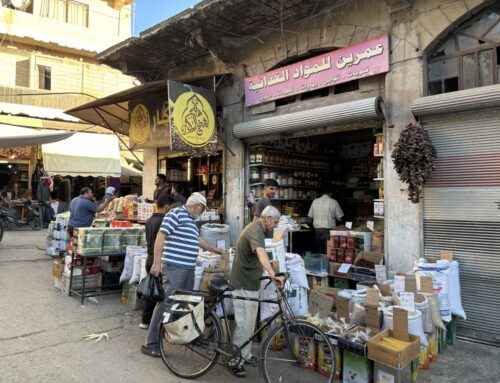The 2025 massacres against Alawites, Druze, and Christians shattered the trust of minorities in the new Syrian regime. Despite his denials, Ahmad al-Sharaa finds it difficult to separate himself from the atrocities committed by HTS. Caught between revenge-fueled sectarianism, social hostility, and the fear of decline, Syria is once again trapped in a cycle of exclusion and exodus.
Article Published in Conflits on October 27, 2025
The brutal attacks on Alawites in March and Druze in May and July have deeply shaken the trust of minority groups in the new administration. The Kurds now reject the idea of disarming and integrating without serious guarantees, fearing they will suffer the same fate.
Persecution of Alawites
Ahmad al-Sharaa claims that he bears no responsibility for these massacres. This claim has been disputed by several articles [3] and reports [4]. During my recent trip to Syria in September 2025, I collected testimony that confirms the involvement of Hayat Tahrir al-Sham (HTS). In Homs, for example, police stopped security forces from entering Alawite neighborhoods, directing them towards the coast. The objective was to reach the heartland of the Alawites to prevent any attempt at rebellion by raising the possibility of an Alawite uprising orchestrated by members of the former regime.
In early March, there were indeed fatal encounters involving members of the security forces in Latakia and nearby Jableh. However, these incidents seem to be isolated cases rather than evidence of a widespread insurgency.
The week of carnage (March 4–9, 2025) claimed the lives of 1,400 people, according to official figures, but many believe this number to be a gross underestimate. A colleague working for the Red Crescent shared with me that the death toll in the Qoussour district of Banias was 800, while the government only acknowledged 300. The White Helmets, an NGO that distinguished itself alongside the rebels during the war, quickly replaced the Red Crescent, which was simply expelled from the area. This allowed the pro-government organization to downplay the scale of the massacre, according to my sources.[5] Those responsible for the carnage have not received any consequences.
Since March of last year, there has not been a single day without news of an Alawite being murdered or gone missing. Young men live in constant fear, desperate to escape. Women are abducted, then forced to marry jihadists, claiming that they willingly joined their husbands after appearing wearing a niqab. Families keep quiet because of shame, but also out of fear of reprisals.[6] The current situation is exacerbated by the numerous layoffs in the civil service and military, which disproportionately affect the Alawite community. Consequently, hundreds of thousands of Syrians find themselves without any means of support.
The Druze have experienced a similar situation since May 2025, when the offensive against their strongholds in the suburbs of Damascus began, resulting in the death of about one hundred people. The assault on Jebel Druze in July only served to deepen distrust in the new regime. As a result, many Druzes have chosen exile or secession, as demanded by the Druze sheikh Hikmat al-Hijri [7].
The Decline of the Christian Community
Christians, once a significant presence in the region, have been greatly diminished by mass emigration and conflict. Their numbers have dwindled from 1.2 million (5% of the population) in 2011 to under 300,000 (1.5% of the population) by the present day.
With an ageing population, it is no longer possible to rebuild communities. The clergy has decided to submit to the new authorities to protect what remains. However, Christians are afraid that they will become the regime’s next victims. In June 2025, a devastating bombing occurred at a church in the Damascus suburb of Mar Elias, claiming the lives of 20 innocent people. Such attacks were last seen during the massacre of Syrian Christians in 1860. They caused deep trauma in the community, leading to further departures.
Christians have been subjected to violence and discrimination due to their faith. Recently, two young men were murdered in Wadi Nassara, west of Homs, in late September. In Qusayr, returning Sunni refugees allege that these Christians participated in their forced departure from the city, in collaboration with Hezbollah. They are now urging them to leave their possessions behind.
The Christian community of Mehardeh, situated in a Sunni-dominated region, bribed neighboring towns to avert retaliatory attacks. The residents consented to the removal of a gravestone in the cemetery that commemorated the 200 civilians killed by rocket fire from neighboring villages during the conflict.
In the Christian neighborhoods of the various towns, the call to prayer can no longer be avoided. The new authorities have installed powerful loudspeakers near the mosques that broadcast the chants throughout the area. As a result, Christian communities in Syria face extinction due to mass emigration.
Those remaining today only hope that property prices will increase, allowing them to sell their assets fairly and join their children and grandchildren overseas. The final Christian communities in Syria will gradually fade away.

Sectarian and societal resentment fuel insecurity
Citizens are plagued by homicides, kidnappings, extortion, and robberies, regardless of their affiliation. However, minorities are particularly vulnerable due to the spread of religious hostility and unfounded allegations of collaboration with the previous administration.
Supporters of Ahmad al-Sharaa break into houses, both empty and inhabited, without any consequences. All they need to do is label the owner as a “fulul” (a former regime agent) to get them evicted. If the unfortunate owner dares to file a complaint with authorities, they may face imprisonment and brutality.[10] Indeed, the local chiefs, known as “sheikhs,” do not hesitate to mistreat asylum seekers, even if they are Sunni Muslims. Because they stayed in Assad’s control rather than fleeing to Idlib or abroad, they are considered collaborators.
The urban elite is the primary target of newcomers, many of whom come from rural backgrounds and have modest social status. This communal retaliation is accompanied by class-based revenge. This was apparent from the outset of the uprising, as protesters raided industrial and commercial areas, particularly in Aleppo. Today, Ahmad al-Charaa, who comes from Damascus’s lower middle class, is facing dissatisfaction from his supporters, who accuse him of being too soft on the wealthy, whom they believe helped the former government.
Indeed, the restoration of Mohamed Hamsho, a prominent figure in the pro-Assad elite, may catch some people off guard. Despite his offer of a substantial bribe to Ahmad Al-Sharaain exchange for clemency, this action sends a troubling message to the public. This businessman, through his ties to Maher al-Assad [11], demolished tens of thousands of homes in bomb-ravaged neighborhoods to recover the scrap metal, which he then processed in his factories. This unfortunate impression arises that, despite the shift in leaders, the very system itself has remained unaltered.
[1] Fabrice Balanche, “Géographie du massacre des alaouites” Conflits, March 24, 2025. https://www.revueconflits.com/geographie-du-massacre-des-alaouites/
[2] Philippe Droz-Vincent, “Les violences inter-communautaires en Syrie et l’avenir de la transition” The Conversation, July 30, 2025. https://theconversation.com/les-violences-inter-communautaires-en-syrie-et-lavenir-de-la-transition-261892
[3] Maggie Michael, “Syrian forces massacred 1,500 Alawites. The chain of command led to Damascus,” Reuters, June 30, 2025. https://www.reuters.com/investigations/syrian-forces-massacred-1500-alawites-chain-command-led-damascus-2025-06-30/
[4] United Nations, “Syria: Violence in Alawite areas may be war crimes, say rights investigators”, August 14, 2025, https://news.un.org/en/story/2025/08/1165649 [5] Interviews in Syria, September 2025.
[6] Amnesty International, “Syria: Authorities must investigate abductions of Alawite women and girls”, July 28, 2025, https://www.amnesty.org/en/latest/news/2025/07/syria-authorities-must-investigate-abductions-of-alawite-women-and-girls/
[7] L’Orient le Jour, “Le cheikh Hijri réclame une « région druze séparée » dans le sud de la Syrie,” August 25, 2025. https://www.lorientlejour.com/article/1474871/le-cheikh-hijri-reclame-une-region-druze-separee-dans-le-sud-de-la-syrie.html
[8] L’Orient le Jour, “Retour au calme après une fusillade meurtrière dans la région chrétienne de Wadi el-Nasara” October 2, 2025, https://www.lorientlejour.com/article/1479472/retour-au-calme-apres-une-fusillade-meurtriere-dans-la-region-chretienne-de-wadi-el-nasara.html
[9] Personal interview in Homs, September 2025.
[10] I gathered several accounts during my September 2025 trip to Damascus, Aleppo, Latakia and Homs, which involved the seizure of housing.
[11] Maher al-Assad is the brother of the former president. He led the infamous Fourth Division, which gained fame through extortion and plunder rather than military accomplishments.







